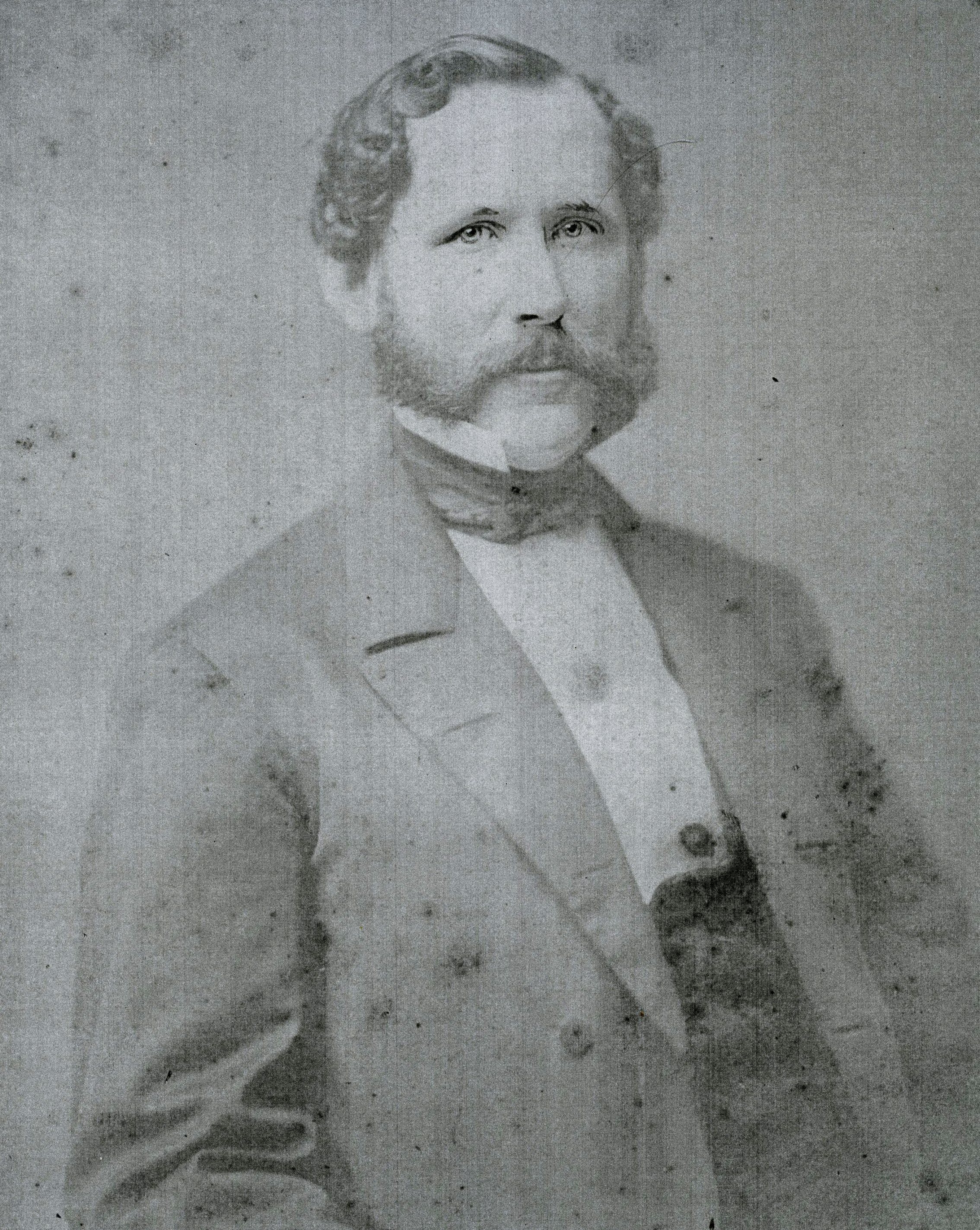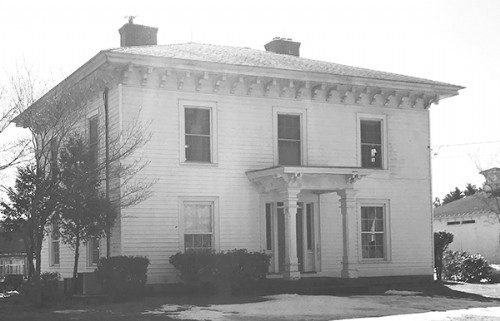Cyrus Hubbard & His Higganum Home
The Cyrus and David Hubbard House at 91 Little City Road is one of Haddam’s best examples of Greek Revival/Italianate style domestic architecture and has been called the “grandest” house in the Ponsett District.
 Cyrus Hubbard built the house and adjoining barn for his parents David and Julia Hubbard in 1849. David was a successful farmer and the Hubbard Family was one of the area’s earliest and most prominent families. Hubbard’s three maiden sisters, Miriam, Rhoda and Hadassah also resided with the family in the new house. The “old maids” are fondly remembered in the Reverend William C. Knowles “By Gone Days in Ponsett-Haddam” published in 1914. He recalls that the maiden aunts were always on hand to help out in sickness or any other misfortune which included bandaging wounds to sewing buttons. The “aunties” were always there with stories to entertain or advice to manage. He called them “a noble army of martyrs”.
Cyrus Hubbard built the house and adjoining barn for his parents David and Julia Hubbard in 1849. David was a successful farmer and the Hubbard Family was one of the area’s earliest and most prominent families. Hubbard’s three maiden sisters, Miriam, Rhoda and Hadassah also resided with the family in the new house. The “old maids” are fondly remembered in the Reverend William C. Knowles “By Gone Days in Ponsett-Haddam” published in 1914. He recalls that the maiden aunts were always on hand to help out in sickness or any other misfortune which included bandaging wounds to sewing buttons. The “aunties” were always there with stories to entertain or advice to manage. He called them “a noble army of martyrs”.
Cyrus Hubbard, who financed the construction of the house, made his fortune as a liquor and segar (cigar) importer in New York City. He and his wife, Rhoda split their time between the city and Haddam. Extremely successful as a liquor importer, Hubbard can claim a patent for “Holland Gin” which he received in 1875 and was called “Swallow Schiedam”. The gin capital of the world is Schiedam, Holland. The Italianate style was the fashionable architectural style of the mid-19th century and Hubbard constructed it to show off his success.

After his father's death in 1872, Cyrus and his wife lived in the house until his passing in 1900. His funeral was news worthy as it was officiated by both a Catholic Priest and Episcopal Clergyman which was considered very “rare” for the day.
In early 20th century the property was owned by Czechoslovakian immigrants who operated a chicken farm and in 1967 the house was purchased by the Board of Education to house administrative offices. It later became home to Youth and Family Services of Haddam-Killingworth, Inc. and HK Recreation Department.
Architecturally the house is cubed in form and features a hip roof with significant overhanging eaves supported by decorative brackets, a tell-tale sign of the Italianate style. The front entrance portico is highly embellished with carved columns supporting an entablature with brackets. The interior exhibits original ornate marble fireplace surrounds, moldings and doors. The impressive barn to the east has board and batten siding and similar brackets supporting the eaves. It also is Italianate in style and is one of finest barns remaining in Haddam.
